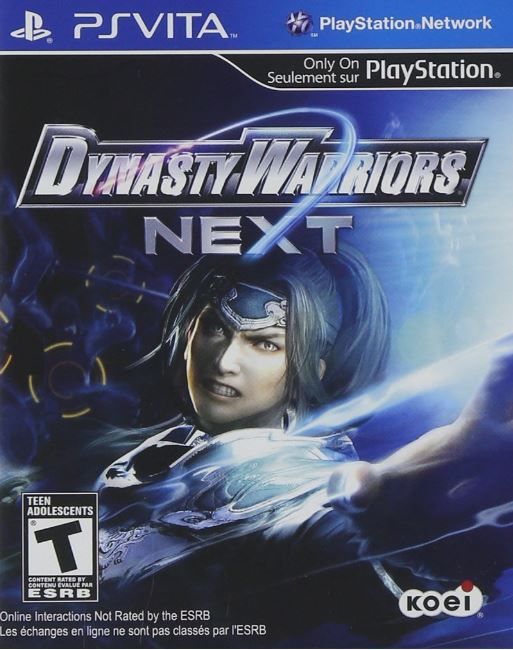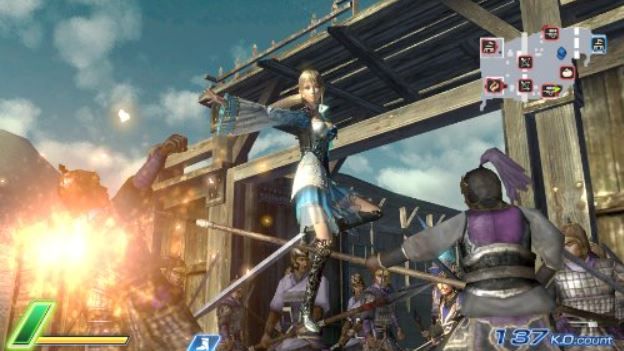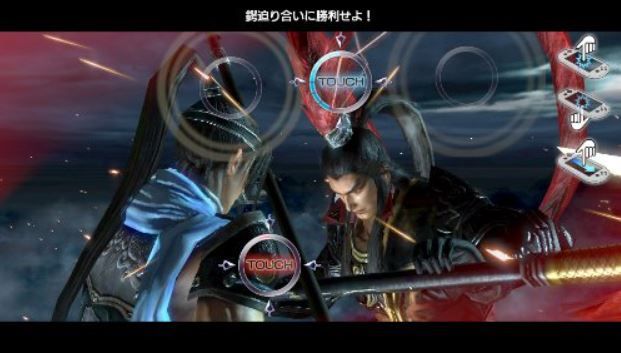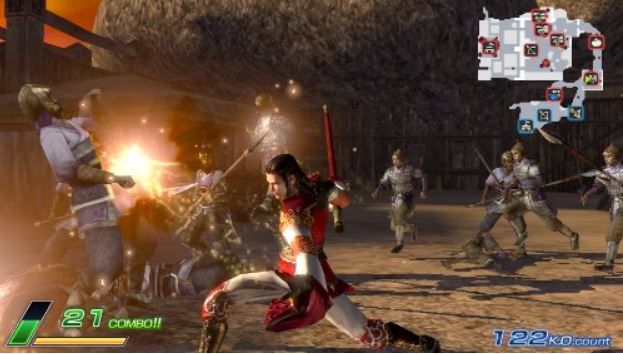Handheld gaming is more than a compromise of power and portability. Whether it’s the ability to play anywhere, multitask or hold an entire console in your hands, it’s a special experience consoles have never replicated. In a world where high resolutions and teraflops reign supreme, we take a look at a portable relic every month and reflect on what makes it memorable. Be warned, spoilers may occasionally populate these articles.
It might not receive the best critical reception or commercial success, but Dynasty Warriors is an incredible series. The story is always the same, even if it does get fleshed out more with each new game, and despite new tweaks with each entry, the gameplay is largely the same. Nevertheless I've played every mainline entry since Dynasty Warriors 2 and a few Xtreme Legends and Empires, and there are many others like myself who enjoy the retelling of the Romance of the Three Kingdoms saga while single-handedly hacking thousands of enemy soldiers to death. After completing Wo Long: Fallen Dynasty where a single enemy poses a threat, it seemed like Dynasty Warriors Next was a good alternate Three Kingdoms setting where the player can cut through hundreds of enemies like butter and there are way less demons to contend with.
Anyone who has played any Dynasty Warriors game knows the general premise as each game covers the same story but subsequent games tend to build on the previous entries. The games are based on the literary classic Romance of the Three Kingdoms. The novel covers over a century during the years 169-280 AD, but the games typically begin during the Yellow Turban Rebellion in the year 184 during the twilight of the Han Dynasty and extend into the Three Kingdoms era where battles to unify the land are fought between the kingdoms of Wu, Shu and Wei in the first few decades of the third century, with the last scenario occurring in the year 238. Starting with Dynasty Warriors 7 a fourth kingdom, Jin, was introduced and included in Dynasty Warriors Next.
Much like the story, there are slight changes to gameplay with each entry, but if we're just looking at the core gameplay, if you've played one Dynasty Warriors you've played them all. Normally that's a knock against any series, but as a Dynasty Warriors fan, it's basically what we want. The army of one hacking through hundreds or thousands of enemy soldiers is satisfying. For the uninitiated, Dynasty Warriors pits one character on the battlefield where they fight endless hordes of enemy soldiers. Tipping the scales in the player's favor involves capturing enemy bases and completing the battle usually requires some criteria like keeping a key ally alive and taking out the enemy leader or capturing their main base.
The format of running through battlefields hacking endless enemies to death is a simple-yet-enjoyable formula. The game progression feels like it falls somewhere between a mainline Dynasty Warriors game and Dynasty Warriors Empires. Instead of selecting a character or kingdom to fight for the player selects a scenario like the Anti-Dong Zhuo Coalition or the Battle of Chibi. In this scenario there's a map of the mainland divided into its provinces. The player can choose which adjacent province they want to invade (usually there's only one option) and will fight either as a predetermined character or choose from a limited selection of available officers. Money can be spent to purchase buffs before each battle.
To Omega Force's credit, they did make attempts to differentiate this title from other games in the Dynasty Warriors franchise, lest they be accused of simply re-releasing the same game over and over again. Unfortunately their innovative touch happened to be touch controls that seem like something that would be tacked onto an early Nintendo DS game for the sake of doing so. Some of the implementation is cool from a tech showcase standpoint, but the novelty wears off quickly, plus some of the events disrupt normal gameplay and are annoying. Sometimes an abrupt ambush happens where the player needs to touch incoming arrows or incoming leaping soldiers. This in itself isn't too terrible, but sometimes this requires the Vita be physically moved around to hit some of the offscreen threats which isn't great if the player happens to be playing on an a form of public transportation. There are other implementations such as duels where the players swipes the screen a certain direction to attack or tries to navigate a path on horseback. Credit to the dev team for trying something new and bringing some innovation to the series, but the touchscreen implementation just isn't all that fun.
There are a few different game modes in Dynasty Warriors Next. Conquest Mode is the primary story mode where the player battles the opposing forces across familiar Dynasty Warriors battlefields. Conquest Mode is multiplayer friendly so friends can do co-op. The flipside to this is if online mode is enabled, sometimes an enemy player can invade the game after a battle is completed and the player has to swipe the screen to the defeat the enemy invader. Coalition Mode is another multiplayer option that allows up to other four players to take part in skirmishes with different objectives. Gala Mode is where players can take photos and play all the touchscreen minigames uncovered in Conquest Mode such as Marksman or Steeplechase. Outside of these modes players can edit officers, look at character cards or browse the encyclopedia for Three Kingdoms history.
Despite the touchscreen minigames feeling more like an annoying interruption than an enhancement to the gameplay, Dynasty Warriors Next is a solid entry in the franchise and works well on the handheld platform. Each battlefield can be completed faster than most levels on home consoles which is great for wanting to make progress in the game while having limited time to play such as riding a bus or waiting for an appointment. The story and core gameplay isn't anything new, but the approach to progressing through Conquest Mode shows effort in repackaging a familiar entity so that it doesn't feel like a complete rehash of the previous Dynasty Warriors titles despite none of them ever deviating much from their predecessor.
Dynasty Warriors Next was a launch title for PlayStation Vita, releasing at the end of 2011 in Japan and early 2012 in North America and Europe. As a launch title it showcased how the handheld was narrowing the gap in game performances between handheld and home consoles. It isn't the best Dynasty Warriors game out there, but does deliver gameplay and graphics that are on par with what players were used to experiencing on their home console, making it a worthy addition to any Musou fan's handheld library.
Get more Pocket Power. Click here to view every Pocket Power so far and prepare for a pocket-sized stroll down memory lane.





